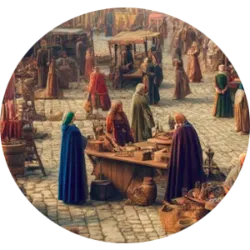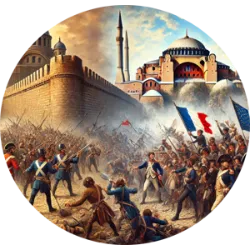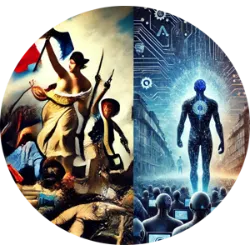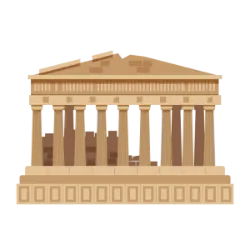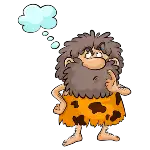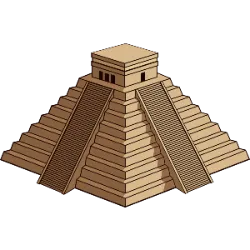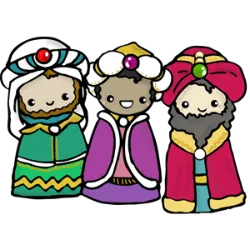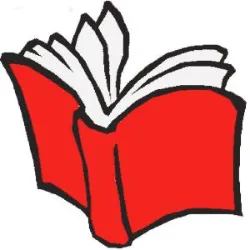The Carolingian Empire
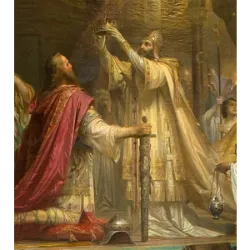
In the 9th century, Charlemagne, king of the Franks, managed to unify much of Western Europe, creating the Carolingian Empire, which stretched from present-day France to Germany and parts of Italy. His rise to power represented a pivotal point in medieval history, being one of the first moves towards political centralization after the fall of the Roman Empire. In 800, Charlemagne was crowned Holy Roman Emperor by Pope Leo III, symbolizing the alliance between the Church and the monarchy, and consolidating his power.
During his reign, Charlemagne promoted administrative reforms, supported education, and encouraged the spread of Christianity. He also strengthened the borders of his empire, resisting external invasions and internalizing a system of feudal governance. However, after his death in 814, the empire was divided among his sons, leading to the fragmentation of his inheritance.
Although the Carolingian Empire was short-lived after Charlemagne's death, its rise represented an important transition between antiquity and the Middle Ages, laying the foundations for medieval Europe and influencing future European empires.
Fall of the Western Roman Empire
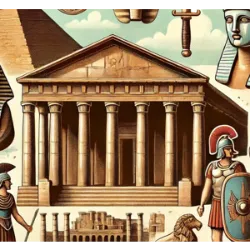
In 476 AD, the fall of the Western Roman Empire marked a crucial milestone in European history and the beginning of the Middle Ages. The last Roman emperor, Romulus Augustulus, was deposed by the barbarian leader Odoacer, signaling the collapse of an empire that had dominated vast regions of Europe, Asia, and North Africa for centuries. With the fall of the empire, Western Europe entered an era of great political and social instability, ushering in the medieval period.
The end of the Roman Empire resulted in the fragmentation of the territory into several barbarian kingdoms, such as the Visigoths, Ostrogoths, and Franks. This marked the transition from a centralized system to a decentralized political organization, where power was divided among small kingdoms and feudal lords. The Catholic Church emerged as one of the main institutions of power, offering stability amidst the chaos.
The fall of the Western Roman Empire, therefore, was a watershed, inaugurating a new phase in European history, characterized by new social, cultural and political dynamics, which would shape the Middle Ages for centuries...
Test yourself with one of these challenges 👇
You can still go deeper with those who are experts in the subject: Ensinar História
Discover some interesting facts about Middle Ages
The Crusades: Religion and Conquest
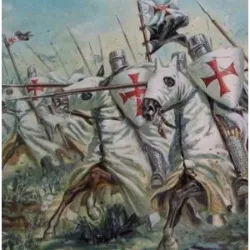
Between 1096 and 1291, the Crusades were a series of Christian military expeditions launched with the aim of retaking the Holy Land, particularly Jerusalem, from Muslim rule. Under the leadership of the Catholic Church, European Christians marched towards the Middle East, motivated by a strong religious appeal as well as territorial and economic interests.
The Crusades had a profound impact on relations between Christians, Muslims and Jews. Although the initial goal was to recapture Jerusalem, the conflicts also resulted in massacres of Jews and tensions between the religions. However, the expeditions also promoted cultural exchange, with contact between the Christian West and the Muslim East bringing advances in areas such as science, mathematics, philosophy and art, as well as stimulating trade.
In addition, the Crusades altered the power dynamics in Europe, weakening the feudal nobility and expanding the influence of the monarch and the Church. The impact of the Crusades was also felt in relations between European powers, promoting the beginning of medieval globalization and expanding trade routes between the West and the East.
The Crusades, although with mixed results, were one of the greatest historical events of the Middle Ages, with lasting repercussions on many aspects of medieval society.
The Black Death: The Devastating Pandemic

The Black Death was one of the greatest tragedies of the Middle Ages, decimating around a third of the European population between 1347 and 1351. The disease, caused by the bacterium Yersinia pestis, was transmitted by rat fleas and spread rapidly through overcrowded cities with poor sanitation. With symptoms such as high fever, swollen glands and skin necrosis, the plague devastated entire villages, leaving streets full of corpses and an atmosphere of despair.
Amidst the chaos, the flagellants emerged, religious groups who believed that the plague was a divine punishment. To atone for the sins of humanity, they would go through cities, self-flagellating with whips, hoping that their suffering would appease the wrath of God. However, their processions often aggravated the spread of the disease.
Medieval medicine, limited and based on superstitious beliefs, offered bizarre cures. Treatments included the use of leeches to "balance the body's humors," potions made from crushed human skulls, and even baths in urine. With no knowledge of the true cause of the plague, doctors of the time, wearing beaked masks filled with herbs, could do little but watch the devastation.
The Signing of the Magna Carta in 1215

In 1215, King John of England signed the Magna Carta, one of the most important documents in political history, which limited the powers of the monarchy and guaranteed certain rights to its subjects. The agreement was the result of growing discontent among the English nobility, who were facing high taxes and abuses of power by the monarch. The Magna Carta established the idea that even the king was subject to the law, marking a turning point in the concept of governance in medieval Europe.
The document guaranteed fundamental rights, such as the protection of the property and freedom of subjects, and introduced important principles such as due process, which would ensure that no one would be imprisoned or punished without a trial. In addition, the Magna Carta also created a council of barons who would be consulted on the creation of taxes, giving the nobility a greater voice.
Although the Magna Carta was initially a response to a specific problem in John's reign, it became an enduring symbol of the struggle against absolute power and inspired future reforms in systems of government. Its legacy is evident in the evolution of modern democracies, being a milestone for the development of the ideas of limited government and individual rights.
The Hundred Years' War (1337-1453)
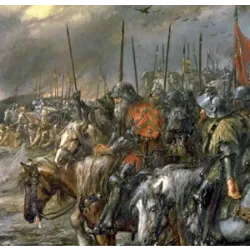
The Hundred Years' War, fought between England and France from 1337 to 1453, was one of the longest-running conflicts in medieval history. The main causes of the conflict were disputes over control of territories, such as Guyenne, and issues related to the succession to the French throne after the death of King Charles IV. Over time, the war involved a struggle for dynastic power, as well as a series of military confrontations and political alliances.
The conflict was characterized by alternating victories and defeats for both sides. However, the final victory of France, led by figures such as Joan of Arc, marked the weakening of the feudal nobility, whose private armies no longer had the same military strength. On the other hand, King Charles VII managed to consolidate a more centralized and stronger monarchy, financed by taxes and supported by a standing army.
The French victory also symbolized the transition from feudal power to the formation of centralized nation-states and the strengthening of monarchies. This event had a major impact on the political and social structures of medieval Europe, bringing about the end of the Middle Ages and paving the way for the development of the Modern Age.
The Great Western Schism (1378-1417)
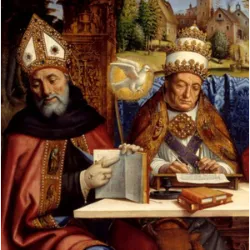
The Great Western Schism, which occurred between 1378 and 1417, was one of the most turbulent periods in the history of the Catholic Church. During this period, the Church was divided, with multiple popes claiming authority simultaneously, which weakened its spiritual power and created serious political and religious divisions in Europe.
It all began after the death of Pope Gregory XI in 1378, when the French cardinal Clement VII was elected pope, but the election was contested by many cardinals, who chose Urban VI as pope. Thus, two rival popes emerged, one in Rome and the other in Avignon, and the schism began. Over time, the division deepened, with other popes being elected and Europe becoming polarized between factions supporting one pope or the other.
The schism weakened the authority of the Church, damaging its credibility and creating a period of religious uncertainty. Furthermore, the division and weakening of the Church also increased political tensions, with kingdoms and factions adopting popes according to their interests.
In 1417, the Schism was resolved at the Council of Constance, with the election of a single pope, but the damage to the unity of the Church and its influence on medieval society was profound, paving the way for future religious reforms.
Test yourself with one of these challenges 👇
HOME
